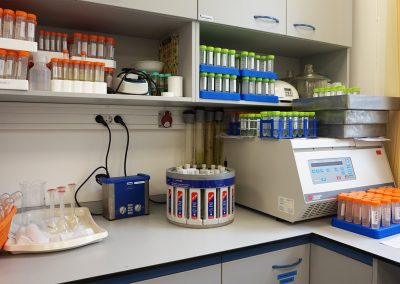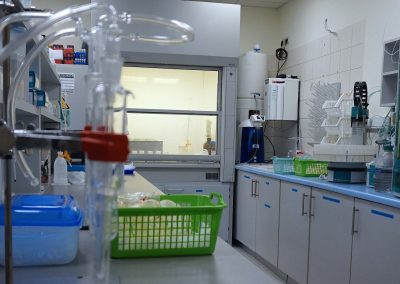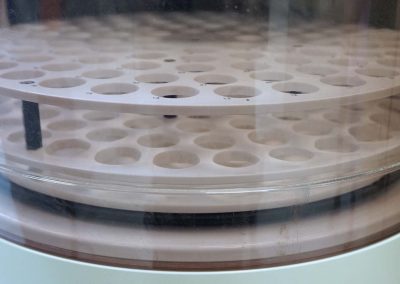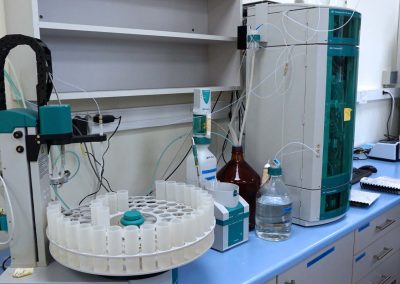Our environmental analytics infrastructure
We strive to serve our customers’ needs with the most modern instrumentation and preparatory laboratories available

Sample preparation
We use a Mars 5 microwave system for sample digestion. The unit can hold up to 14 samples and is equipped with pressure and temperature sensors. The controlled digestion of samples in a controlled, closed system is particularly important for the analysis of toxic elements in low concentrations. This method is used for the preparation of samples that are difficult to digest (e.g. vegetable oils, fats, soils and effluents, organic catalysts).
We use our own temperature-controlled block digester (with a capacity of 42 samples) to prepare easily digestible samples. An air cooler and liquid seal can be connected to the digestion tubes.
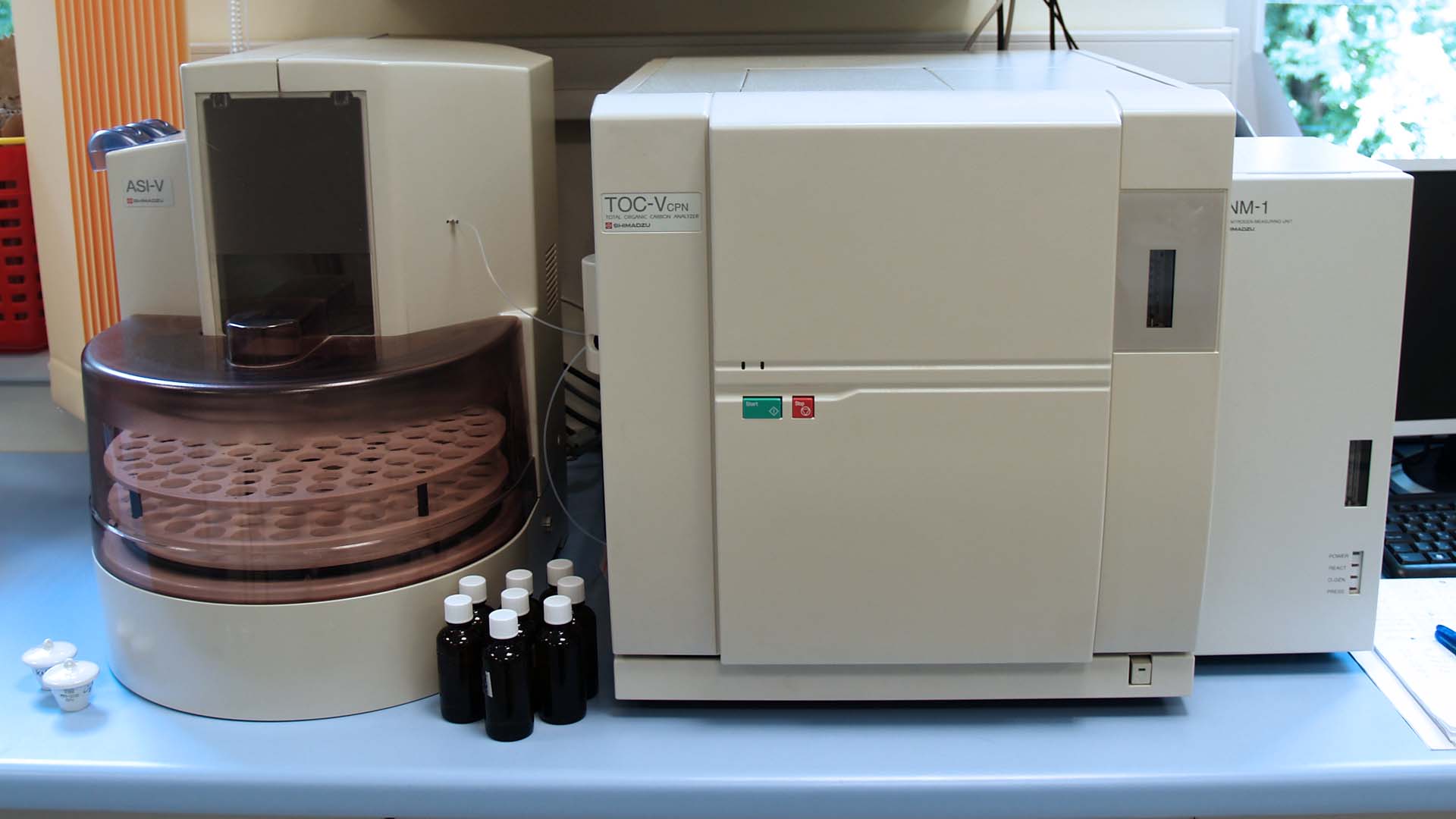
TOC/TN measuring device
The Shimadzu TOC-VCPN apparatus allows the determination oftotal nitrogenin addition to total and organic carbon, since a TNM-1 unit is connected to the system. In its current configuration, the instrument is mainly suitable for the measurement of water samples.

Microwave Plasma Atomic Emission Spectrometer (MP-AES)
Routine analytical applications of microwave plasma atomic emission spectrometry are relatively new. Our facility is an Agilent 4200 MP-AES type. The method is suitable for the simultaneous determination of concentration for most of the elements of periodic table. Among the elements present in the samples, Na, K, Ca, Mg, Fe, Mn, Al, Ba, Sr, B, Si, Pb, Cu, Cr, Zn, etc. are measured by this method when their expected concentrations are between 0.01 and 100 mg/l. It is also suitable for the analysis of soils, rocks, ores and industrial wastes and alloys, and has been used for the measurement of Au, Ag, Pt, Pd, Rh and Ru on special request. An advantage of this technique over ICP-OES is that the MP-AES does not require the use of argon gas, as the plasma is generated from nitrogen produced from compressed air, making it very cost-effective.
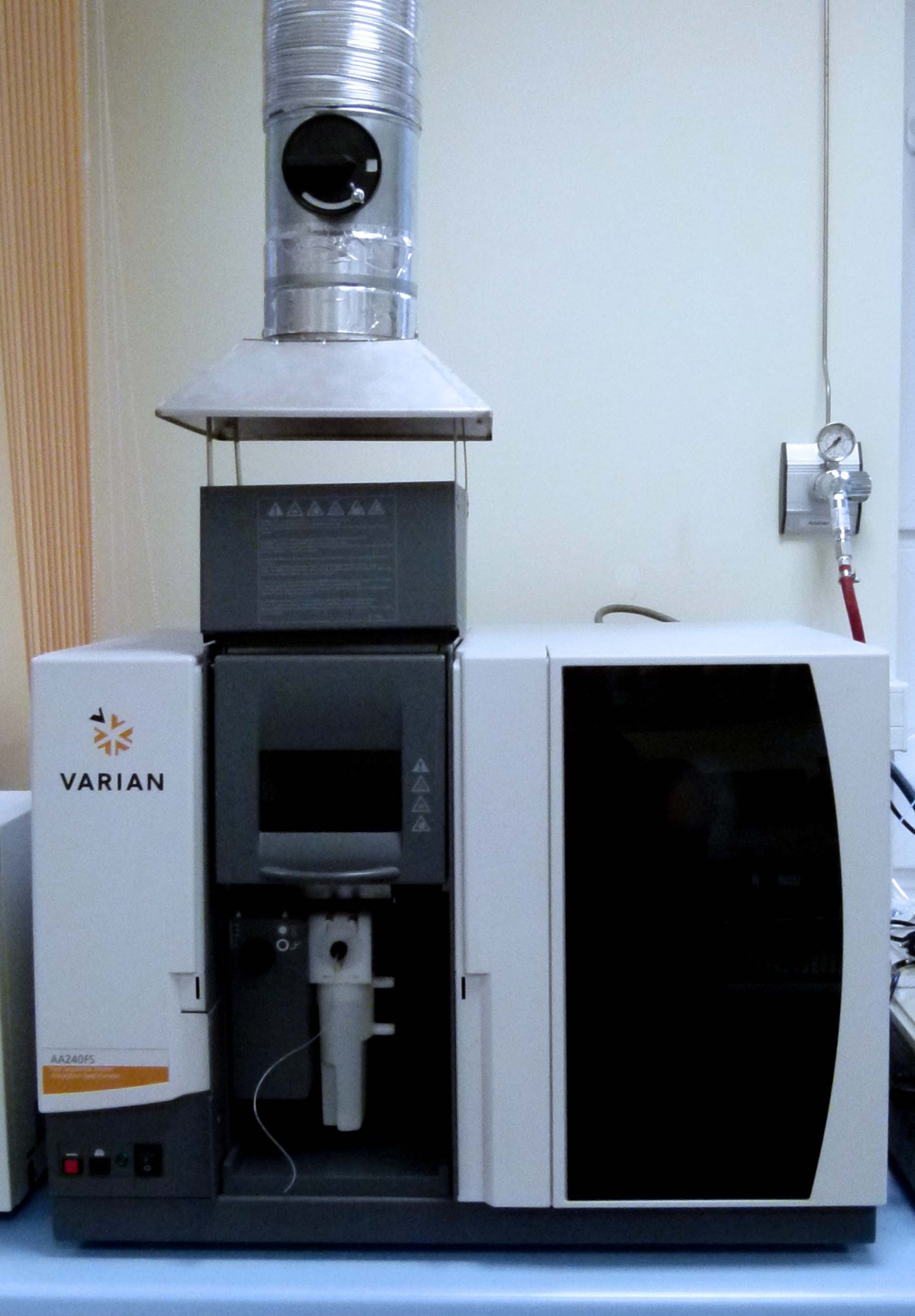
Atomic Absorption Spectrometry (AAS), Flame Exposure Spectrometry (FES)
With the Varian AA240FS flame atomic absorption spectrometer (FAAS) in the laboratory, we can perform measurements using air – acetylene and nitrous oxide – acetylene flame. This technique is used when the concentration of one or a few elements needs to be determined in a relatively large number of samples. The method can also be used for solutions with a high salt content. The instrument is also used for flame photometric (FES) measurements (Li, Na, K and Rb).
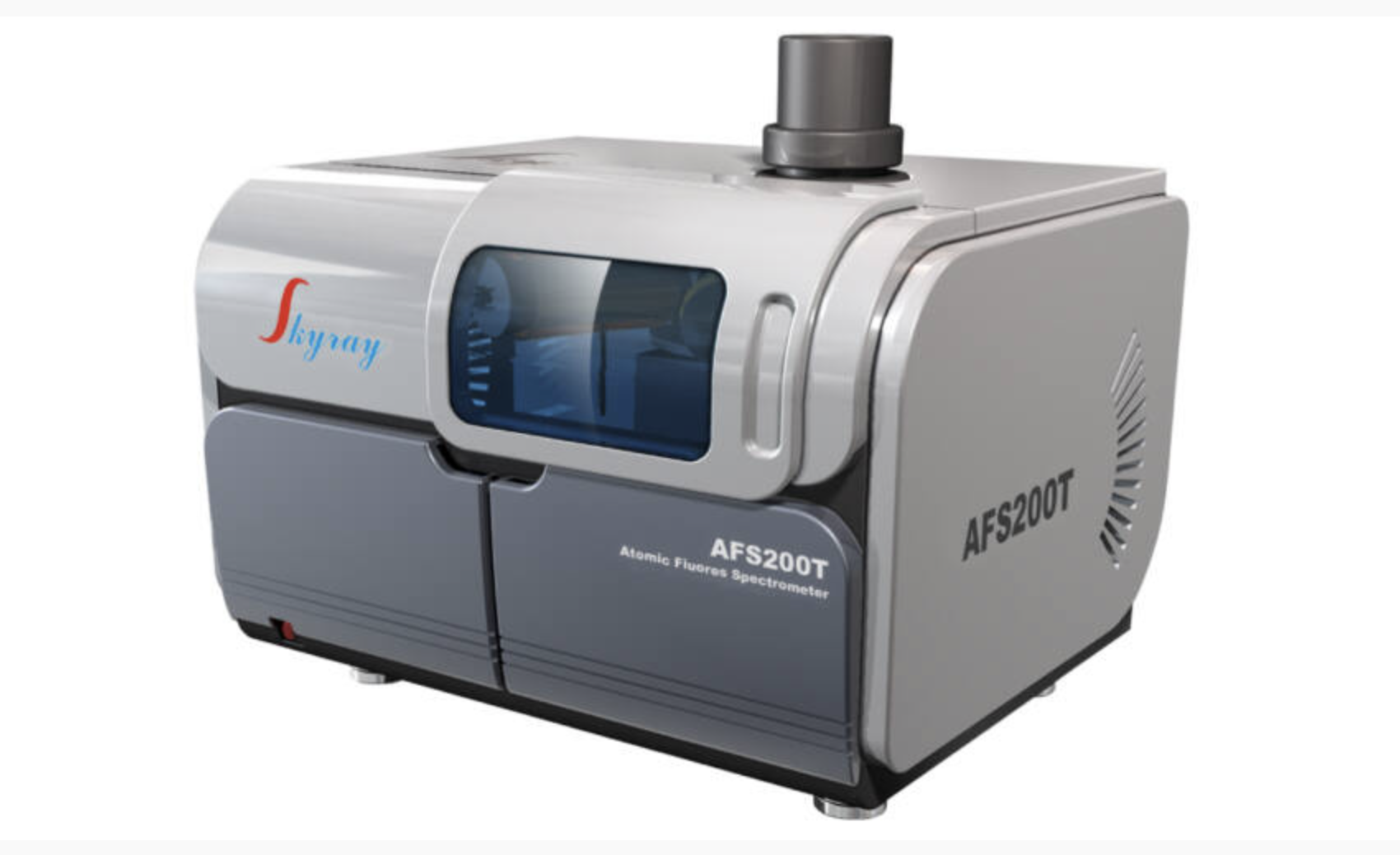
Hydride generation atomic fluorescence spectrometry (HG-AFS)
We employ cold-vapour atomic fluorescence spectroscopy for the analysis of mercury from environmental samples.
The Skyray AFS200T instrument can detect and measure mercury from solutions of low concentrations with a detection limit of 0.01 μg/l.
The instrument is equipped with a heated quartz atomisation tube, therefore it can measure other hydride forming elements such as selenium, arsenic, germanium, lead and tellurium.

Ion chromatograph
Metrohm’s ion chromatography system is equipped with two conductivity detectors and a spectrophotometric detector operating in the ultraviolet and visible range (UV-VIS). Currently, four different columns are available for the determination of the following components:
- Lithium, sodium, potassium, calcium and magnesium concentration determination – detection is performed by a conductivity detector. The column is also suitable for measuring ammonium ions.
- The determination of the anions fluoride, chloride, nitrite, nitrate, phosphate, sulphate and bromideis also carried out with a conductivity detector in suppressed mode.
- The organic acids (oxalate, citrate, picolinate, gluconate, acetate, adipate, formate, glutamate, malate, methanesulfonic acid) are also determined in the suppressed mode using a conductivity detector.
The UV-VIS detector used for the determination of complexing agents (NTA, EDTA, CDTA, DTPA) is a diode array detector, which allows the acquisition of the full spectrum at all points of the chromatogram (peak purity analysis, identification).

Spectrophotometer (UV-VIS)
The spectrophotometric method is mainly used to measure the ammonium ion concentration, organic nitrogen, nitrite and nitrate concentrations in water, as well as phosphorus forms (ortho-phosphate and total phosphorus content). UV-VIS spectrophotometer is a double beam instrument and operates at a wavelength range of 190 to 900 nm
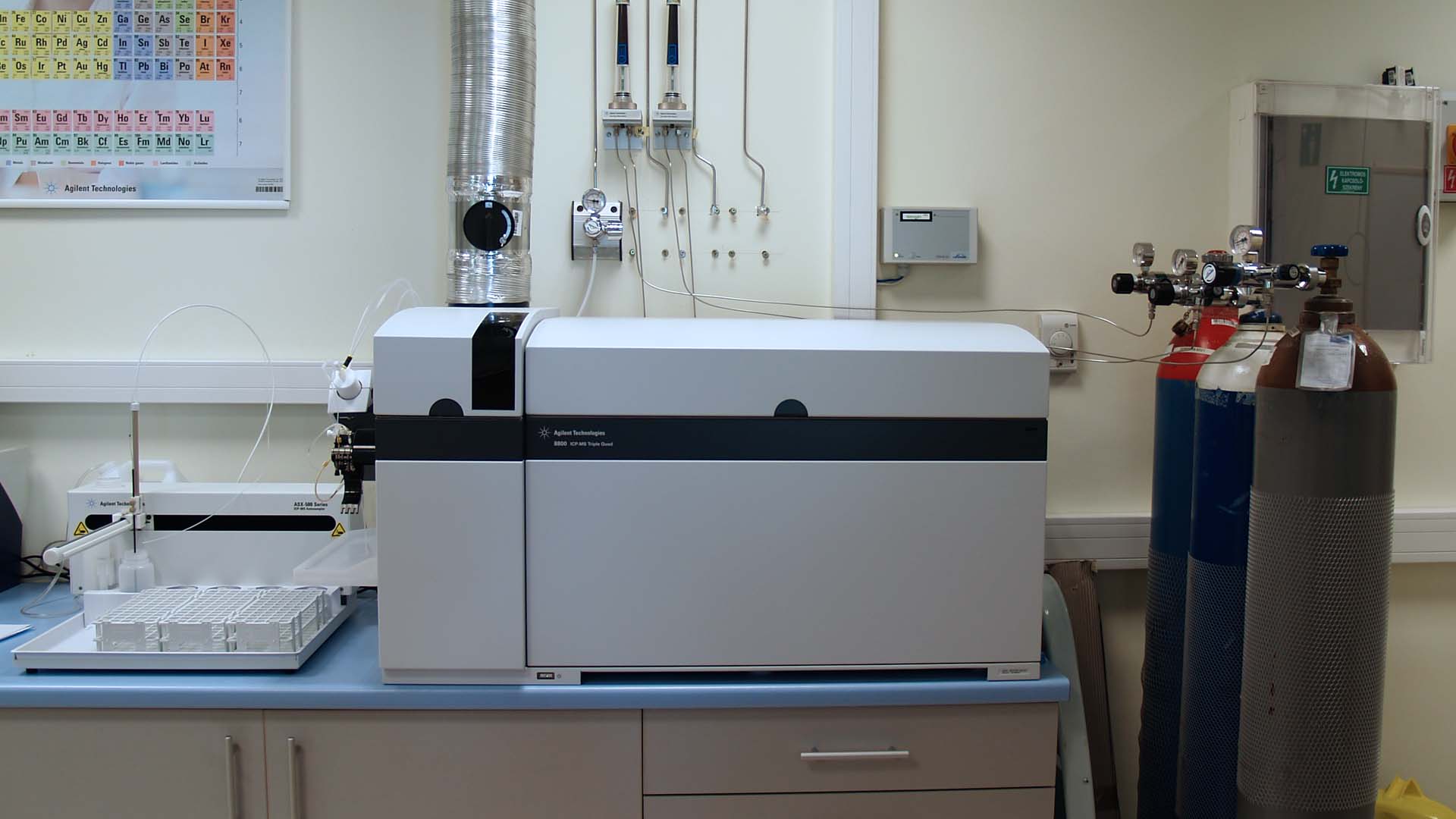
Inductively coupled plasma mass spectrometry (ICP-MS)
A high-resolution inductively coupled mass spectrometry method is used to determine the concentration of trace amounts of essential or toxic elements. The Agilent 8800 Triple Quad instrument is unique that it contains two quadrupole units with a collision cell between them. With the collision gases, interference from molecular ions can be eliminated. It can therefore be used to performhigh-resolution MS/MS measurements that other instruments cannot. The lowest measurable concentrations are in the ng/l range. The instrument can also be used to determine the concentrations of almost all elements of the periodic table, as well as their isotope ratios. The method also offers the possibility to perform special analyses, e.g. Th/U age determination, measurement of rare earth elements, platinum group elements. We managed to detect very low concentrations of gadolinium in municipal wastewater, which is used as a contrast agent in medicine. But it is also suitable for the determination of components in surface water and groundwater that are difficult to measure and are found in low concentrations (e.g. Ag, As, I, Th, U).
The instrument is also equipped with a laser ablation device (NWR-213 ESI, New Wave). With this technique, the elemental composition of samples can be analysed spot-on. The diameter of the laser beam can be varied between 4 and 120 um and the spatial distribution of the elements can be mapped.

Attenuated total reflection Fourier transform infrared spectroscopy (ATR-FT-IR)
The ATR-FT-IR technique is suitable for studying the molecular composition of solid materials. It is mainly used to solve problems where organic-based molecules are the object of interest. ATR-FT-IR spectra allow qualitative characterisation of solid samples. When coupled with multivariate statistical methods, it is excellent for identity studies as well as for quantitative analysis.

